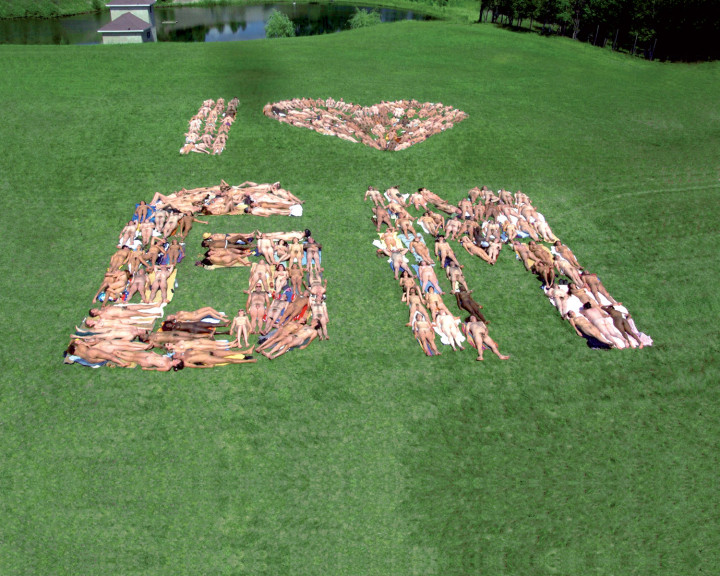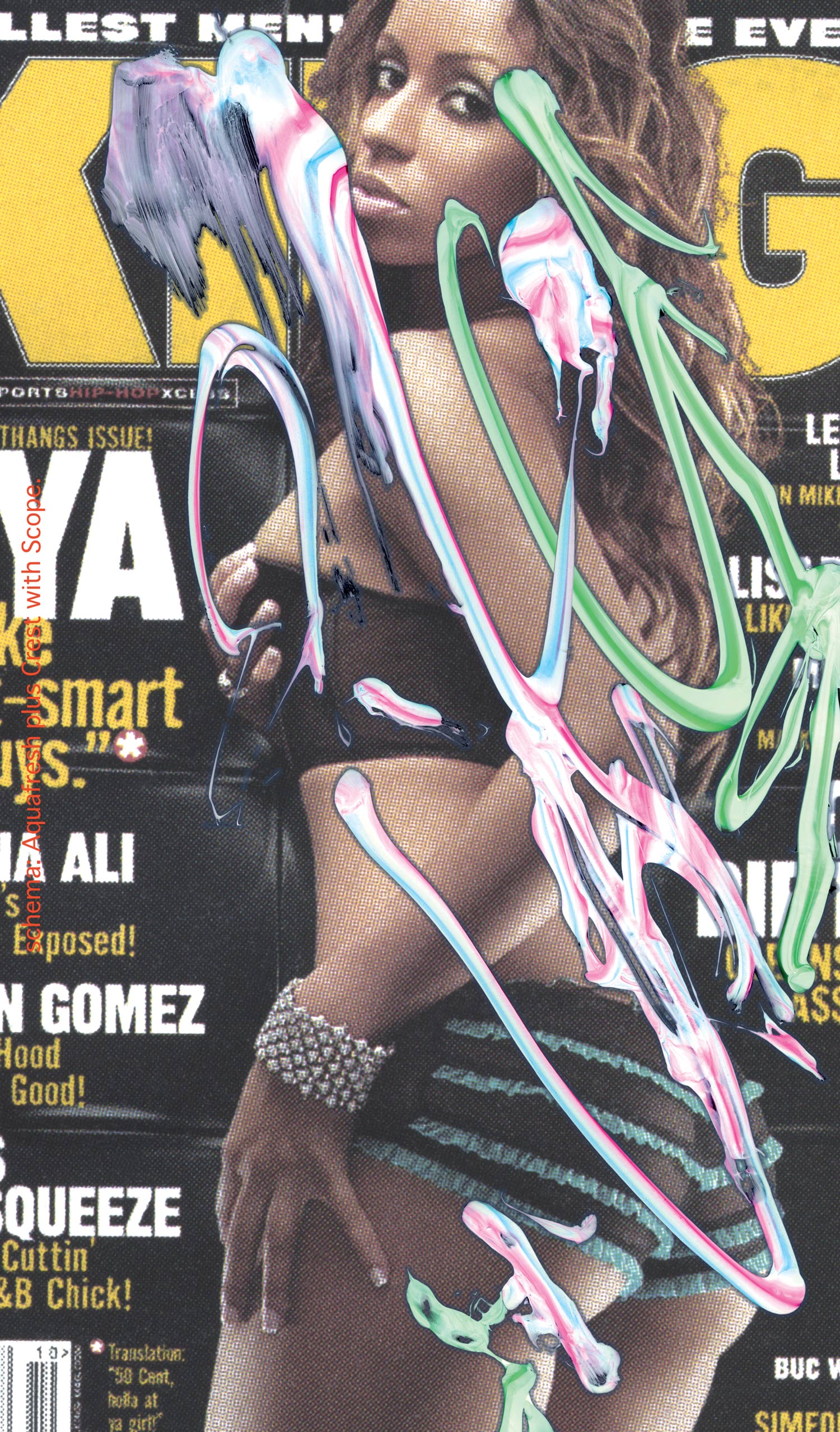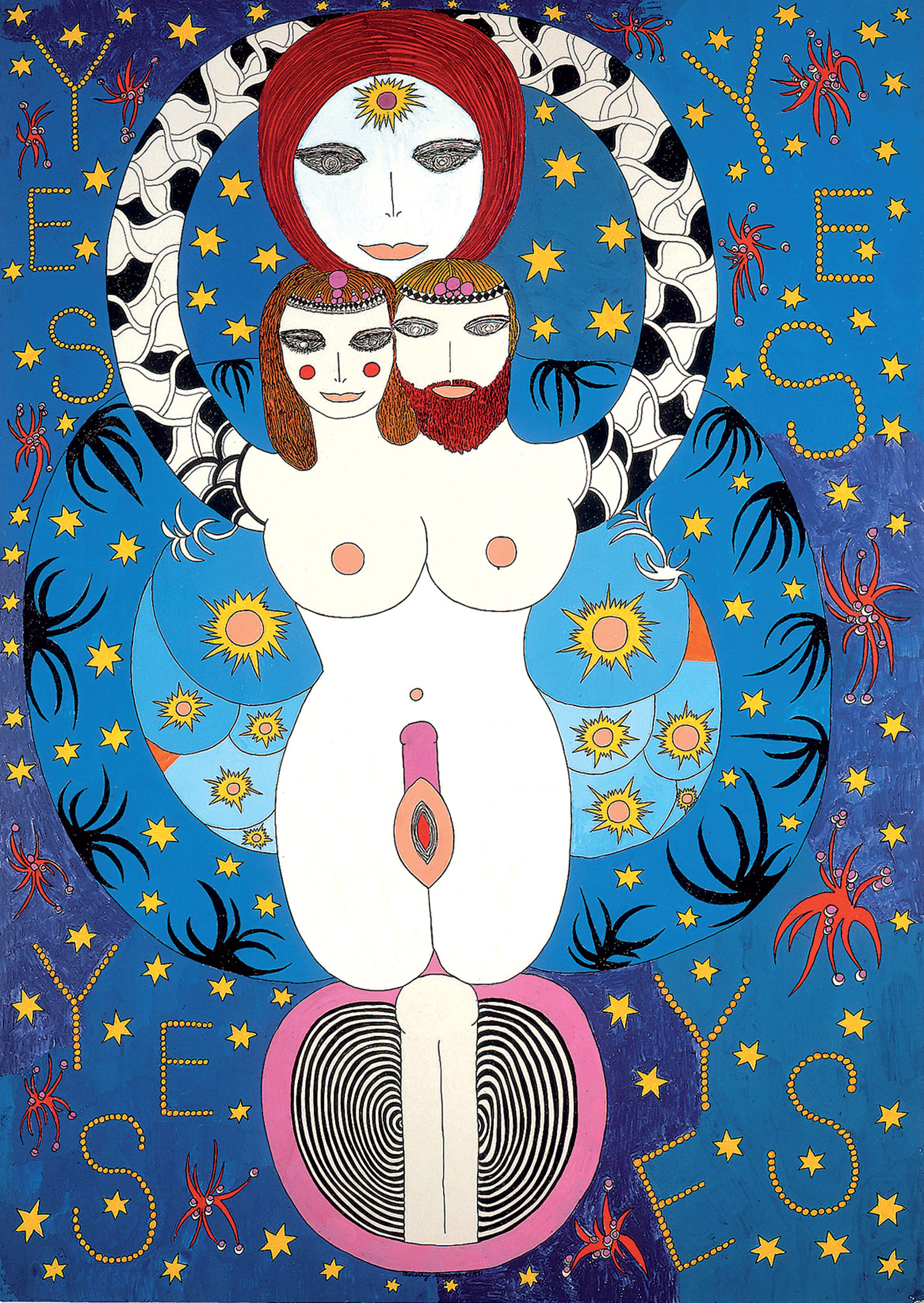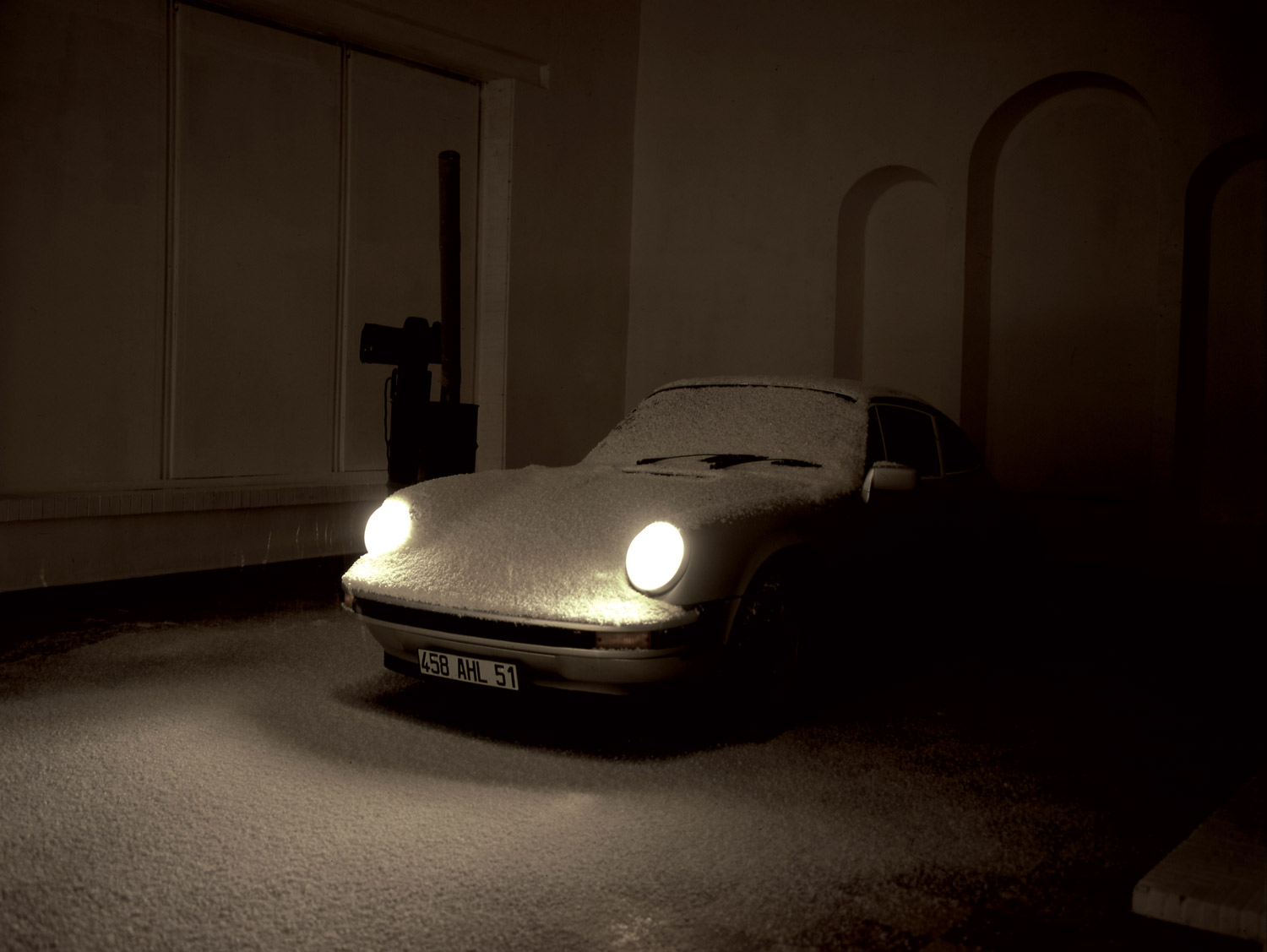
Marco Scotini: To begin with, it’s usually necessary to start from an origin. Yet with you this is not possible. You are never where one expects to find you. You could be on the latest program on French TV, on a page of a Swiss daily newspaper, at the Venice Biennale, behind the CERN Particle Accelerator or on holiday in Lapland. Your art is misleading. Therefore, tell me which track you wish us to pursue.
Gianni Motti: Last year two girls were quarrelling in a café in Paris. One was saying that she had seen me in Berlin and the other in Paris at more or less the same time…
MS: Which of the two was right? And if they were both right, how did you do it?
GM: There’s not much to it really. That day I had taken the train from Frankfurt to Basel. At a certain point I should have changed train but I fell asleep and woke up in Munich instead. While I was waiting for the train to go back, I met a famous collector who even bought one of my works.
MS: Being in the wrong place at the right time: this is the keystone of your actions. Why not be in the right place at the right time, as common sense would have it?
GM: So as not to get bored.
MS: What does obstinately adhering to an unpredictable here and now imply? Is it still possible to create art with these parameters or is it necessary to abandon it in favor of action?
GM: As far as I am concerned, I am like that. That is to say, I act in the following way: I try to create art by forgetting art, otherwise I would create ‘artistic art.’ As Deleuze used to say, to write philosophy philosophy must be forgotten, if not one would be writing ‘philosophying philosophy’ and no one is interested in that. It is rare for a work of mine, even if it is one of a more ‘formal’ nature, not to go beyond the artistic sphere, but I do not do it on purpose.
MS: In an interview with Jérôme Sans you said that the true radicals today are the economists, the politicians, etc. They are the new anarchists of the 21st century. They have understood that the important thing is not to believe but to make others believe. The more radical they are, the more cynical they become?
GM: The three greatest liars and swindlers of the Western world, shallow enough to allow their personal interests to conflict with State issues, are shameless and impertinent because they know that the people know, yet they do not even blush. These three gentlemen — Berlusconi, Bush and Blair — are always and imperturbably in command.
MS: You are rather refractory to the rhetorics of democracy and internationalism. What is the future for our democracies?
GM: I wonder: by exporting democracy, how much of it is left for us?

MS: Robin Hood, hacker, Zelig, agitator, champion of infiltrations: these are some of the terms that have been used to describe your disposition toward denying your individuality in favor of a constitutive parasitism. The slapstick interpretation of your work has, however, concealed the true political nature of it.
GM: Fortunately I am interested in everything because power has become more and more invisible.
MS: All your interventions unveil some surveillance procedures, as in the controlled void of your retrospective exhibition “Plausible Deniability” at the Migros Museum in 2004, or in your prolongation of a marathon route in Bienne, Switzerland, in 2000.
GM: For “Plausible Deniability,” the press announced the event by describing some of the works that would be on view at the exhibition; there were no works on show, however. Instead, visitors found themselves facing a labyrinth, 600 meters long, which wound through the spaces of the museum, without any way of turning back. The labyrinth finally led to an exit at the back, abandoning them to wander between fire escape stairs, parked vans and stored goods. En route were guides that I had prepared, who accompanied the visitors and told them about my works. In short, it was a narrated retrospective exhibition! A security guard, bored and depressed, wandered round and round the museum protecting ‘the works’ exhibited. At Bienne, on the other hand, the day of the opening of the exhibition coincided with the European Marathon Championship. I simply moved the finishing line by three meters, thus obliging the athletes to run 42,198 km instead of 42,195 km. I painted the three extra meters in yellow and wrote Motti’s Space on the ground. So I ended up in both sport and art magazines, and the exhibition was evidently enriched by all the people who were following the sport event.
MS: But your best attack is that on individuality. The individuality of the artist has always been one of those most framed by society. When I look through some of the hundreds of photos of Gianni Motti Assistant, I understand how much philosophy there is behind.
GM: In 1997 a student of Grenoble’s Academy of Fine Arts received a study grant to work for six months abroad with an artist. I accepted him, but after a few days I decided to send him off to tour the world. He had no obligations apart from having to always wear a T-shirt with Gianni Motti Assistant written on it. From the Caribbean to Tanzania, for six months the young globetrotter was able to experience so much more than he could have in my studio. Since that moment my assistants have multiplied and a type of wandering and spontaneous fan club has been created all across the globe.
MS: In 1986 the space shuttle Challenger exploded in the Florida skies. You claimed responsability for it as you have done subsequently for various earthquakes and other natural disasters. What role do extraterrestrials play in your work?
GM: They have no role unless it is one of curiosity. Two years ago I met Raël, the leader of the Raelian movement, who was contacted 30 years ago by a visitor from another planet. I was interested in the fact that, according to Raël, we have been cloned from extraterrestrials, instead of the same old story about human beings descending from Adam and Eve. Raël lent himself to a small performance that I called The Messenger. If someone claims that extraterrestrials exist they end up being considered irrational. A Christian, on the other hand, who claims that God exists, is perfectly rational! As regards earthquakes, the most surprising thing is that the press agencies swiftly accepted my claim. And so the earthquake in Los Angeles in 1992, which caused a 74 kilometer crevice between Joshua Tree and Barstow in the desert of California, became a work of mine, and is still visible today.
MS: And what about nuclear particles? Can you tell me about the work that you have just completed with CERN?
GM: I was invited to collaborate with a scientist from CERN in Switzerland — the laboratory for nuclear physics where the most powerful existing particle accelerator has been installed, the Large Hadron Collider (LHC), which will begin operation in 2007. The particles move at high speed through a 27 kilometer-long tunnel, reaching almost the speed of light, and then they crash violently in search of antimatter residues. I crossed the 27 kilometer tunnel on foot, 140 meters below ground. I liked the idea of walking where quark particles travel at the speed of light. Perhaps one day at CERN they will discover traces of antiMotti! A six hour-long video documents the journey.
MS: You invited a group of Kurdish demonstrators to attend an exhibition about human rights at the Palais Wilson in Geneva; at the Liste art fair in 1999 you presented a banner of the Kurdistan Workers’ Party (PKK); at Manifesta 4 you re-created the cell of the prison of Abdullah Ocalan, the Kurdish leader; at the Palais de Tokyo in Paris you organized the protest Liberez Ocalan for the exhibition “Hardcore.” In all of these projects you have drawn attention to the Kurdish cause.

GM: These works are all invitations. Considering that the community of Kurds is not allowed to demonstrate, with all its members having been declared terrorists, I offered them a space of liberty. I like Frank Perrin’s phrase regarding my work: “When invitations become forms.” Ironically enough, for Turkey to enter Europe today, Brussels has requested that the Turkish government review the issue of the Kurds. The European Court for Human Rights showed that they are in favor of the appeal of Abdullah Öcalan [who was sentenced to death by the Turkish court].
MS: You showed similar consideration in the Guantanamo project. The final phase of the project — the negotiations between Fidel Castro and the United States — have been presented at this year’s Venice Biennale in the section “Always a little further.”
GM: One of my first works on Guantanamo, before the current wave, was to invite 60 Arabs to take part in a project at the church of St. Matthew in Lucca, Italy, in 2003. A sack covering their heads, their arms tied and sitting on the floor, they were lit by powerful projector lights.
MS: Then there was the denunciation at Roland-Garros Stadium in Paris.
GM: On June 5th 2004 — the day of the arrival of George W. Bush in Paris for the commemoration of 60 years since D-Day — I took a place on the VIP stand at Roland-Garros and introduced myself as an Iraqi prisoner from Abu Ghraib prison: my hands were tied behind my back and I had a sack on my head. In the meantime, on the court, the French International semifinals were being played, and so I was featured in many television camera shots.
MS: The Swiss pavilion at the last Venice Biennale had a big clock on its facade…
GM: Big Crunch Clock is a digital clock that counts backwards the five billion years that we have left before the sun explodes. The clock that I installed at the entrance to the Swiss pavilion is the large external format of a previous, much smaller version that I put to work at the end of ’99. It has 20 numbers: from the billions of years to the tenths of a second, and it is designed to be able to function with solar energy — the same energy that will one day destroy it. The buyer will have to adapt it to future technology. A small gift for future generations…
MS: Another surprise was a work that had to do with Silvio Berlusconi.
GM: I like the comment the New York Times made, saying how Berlusconi was no longer a “self-made man” but rather a “re-made man,” that is to say, a man who has had cosmetic surgery. I was able to get hold of a bit of the fat from the liposuction operation that our Premier had undergone in a clinic in Switzerland, and from it I created a bar of soap to exhibit at Art Basel. I think that I am the first person who has ever made some money at Berlusconi’s expense! His endless insistence that he creates wealth made me take him seriously. Now I am the one who has put him on sale.





